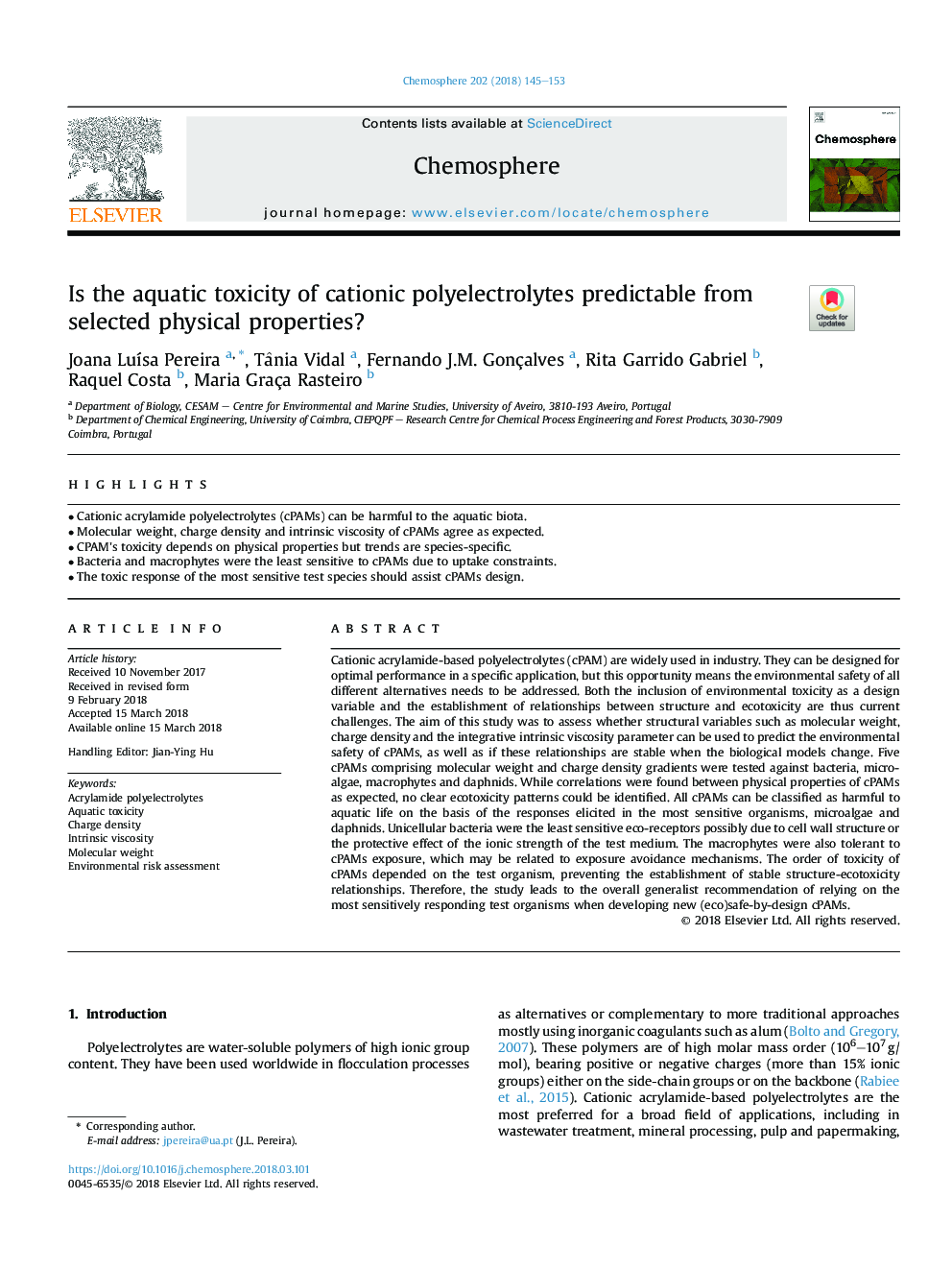| کد مقاله | کد نشریه | سال انتشار | مقاله انگلیسی | نسخه تمام متن |
|---|---|---|---|---|
| 8851414 | 1618769 | 2018 | 9 صفحه PDF | دانلود رایگان |
عنوان انگلیسی مقاله ISI
Is the aquatic toxicity of cationic polyelectrolytes predictable from selected physical properties?
ترجمه فارسی عنوان
آیا آلودگی آبی از پلی اتیلنهای کاتیونی قابل پیش بینی از خواص فیزیکی انتخابی است؟
دانلود مقاله + سفارش ترجمه
دانلود مقاله ISI انگلیسی
رایگان برای ایرانیان
کلمات کلیدی
الکترولیتهای اکریل آمید، سمیت آبزی تراکم شارژ، ویسکوزیته ذاتی، وزن مولکولی، ارزیابی خطر محیطی،
موضوعات مرتبط
علوم زیستی و بیوفناوری
علوم محیط زیست
شیمی زیست محیطی
چکیده انگلیسی
Cationic acrylamide-based polyelectrolytes (cPAM) are widely used in industry. They can be designed for optimal performance in a specific application, but this opportunity means the environmental safety of all different alternatives needs to be addressed. Both the inclusion of environmental toxicity as a design variable and the establishment of relationships between structure and ecotoxicity are thus current challenges. The aim of this study was to assess whether structural variables such as molecular weight, charge density and the integrative intrinsic viscosity parameter can be used to predict the environmental safety of cPAMs, as well as if these relationships are stable when the biological models change. Five cPAMs comprising molecular weight and charge density gradients were tested against bacteria, microalgae, macrophytes and daphnids. While correlations were found between physical properties of cPAMs as expected, no clear ecotoxicity patterns could be identified. All cPAMs can be classified as harmful to aquatic life on the basis of the responses elicited in the most sensitive organisms, microalgae and daphnids. Unicellular bacteria were the least sensitive eco-receptors possibly due to cell wall structure or the protective effect of the ionic strength of the test medium. The macrophytes were also tolerant to cPAMs exposure, which may be related to exposure avoidance mechanisms. The order of toxicity of cPAMs depended on the test organism, preventing the establishment of stable structure-ecotoxicity relationships. Therefore, the study leads to the overall generalist recommendation of relying on the most sensitively responding test organisms when developing new (eco)safe-by-design cPAMs.
ناشر
Database: Elsevier - ScienceDirect (ساینس دایرکت)
Journal: Chemosphere - Volume 202, July 2018, Pages 145-153
Journal: Chemosphere - Volume 202, July 2018, Pages 145-153
نویسندگان
Joana LuÃsa Pereira, Tânia Vidal, Fernando J.M. Gonçalves, Rita Garrido Gabriel, Raquel Costa, Maria Graça Rasteiro,
